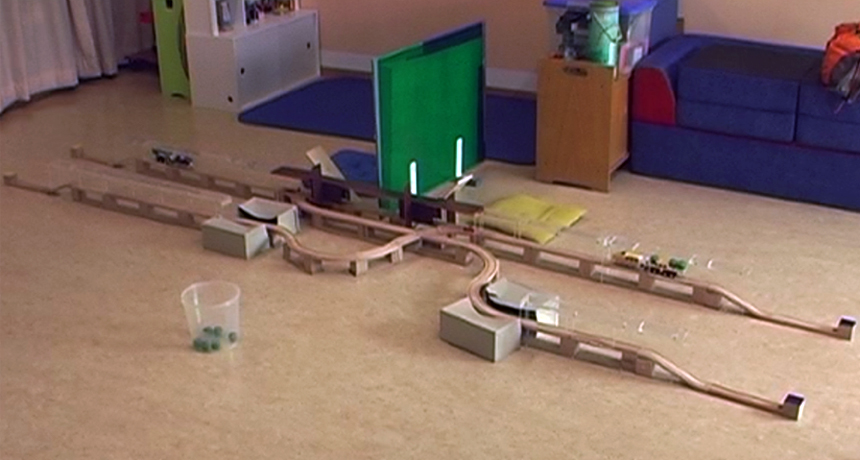Children negotiate taking turns surprisingly early in life
Five-year-old preschoolers opt to share sacrifices, study finds

TRAIN GAINS Pairs of 5-year-olds who steered toy trains in this set-up often decided to take turns swerving their vehicles so that each child could alternately earn big rewards.
S. Grüneisen, M. Tomasello